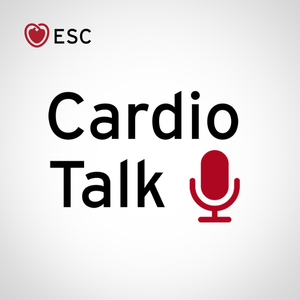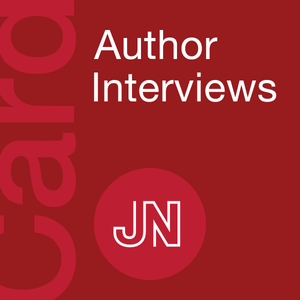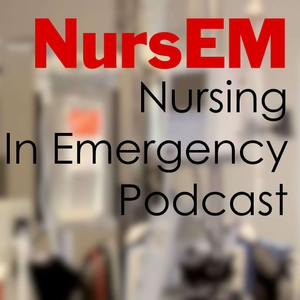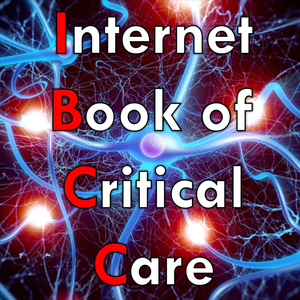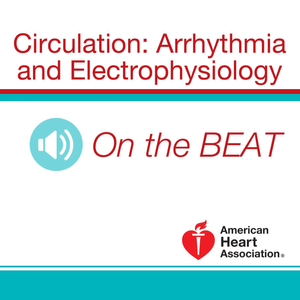
Circulation: Arrhythmia and Electrophysiology December 2019 Issue
04/03/20 • 16 min
Paul J. Wang: Welcome to the monthly podcast On the Beat for Circulation: Arrhythmia and Electrophysiology. I'm Dr Paul Wang, Editor-in-Chief with some of the key highlights from this month's issue.
In our first paper, Jacob Koruth and Associates examine the ability to produce ablation lesions using pulse field ablation, which is tissue specific and non-thermal in swine compared to radio frequency ablation. All 46 targeted veins were successfully isolated on the first attempt in all cohorts. Pulmonary vein isolation durability was assessed in 28 veins, including the SVC. Durability was higher in the pulsed field ablation bipolar group, 18 out of 20 in the bipolar group, 10 out of 18 in the monopolar group, and 3 out of 6 in the radio frequency group. P = 0.002. Transmit morality rates were similar across groups with evidence of nerve damage only with radiofrequency.
In our next paper, Vivek Reddy and Associates is part of the multicentered first-in-human study, RADIANCE, examine the ability of a novel compliant radio frequency balloon catheter with 10 irrigated flexible electrodes to simultaneously and independently deliver energy. At four sites, 39 patients with paroxysmal atrial fibrillation underwent pulmonary vein isolation using energy delivery simultaneously from all electrodes up to 30 seconds posteriorly, and 60 seconds anteriorly. 152 of 152 targeted pulmonary veins were isolated. 79.6% with a single application. Electrical reconnection occurred in only 7 out of 150 pulmonary veins or 4.7% upon adenosine isoproterenol challenge. Esophageal temperature was monitored in all patients. The esophagus was also mechanically deviated in ten patients. At three months, imaging revealed no pulmonary vein stenosis and early atrial recurrence occurred in only 10 out of 39 or 25.6% of patients.
In our next paper Takeshi Kitamura and Associates examine the effect of substrate based ventricular tachycardia ablation targeting local abnormal ventricular activity on recurrent ventricular fibrillation events in patients with structural heart disease. In a retrospective two center study of a total of 686 patients with incident ventricular tachycardia ablation procedure targeting local abnormal ventricular activity, 21 patients, age 57 years left ventricular ejection fraction 30%, had both ventricular tachycardia and ventricular fibrillation.
A total of 80 ventricular fibrillation events were recorded in the ICD logs, the six months preceding ablation. Complete and partial local abnormal ventricular activity elimination was achieved in 11 or 52%, in 10 or 58% of patients respectively. Catheter ablation was associated with a highly significant reduction in ventricular fibrillation recurrences. P less than 0.0001 which were limited to three or 14 patients at six months. The total number of ventricular events therefore, decreased from 80 to three with a median of 1.0 to 0.0 in the six months prior to and following ablation respectively.
The reduction in ventricular fibrillation events was significantly greater in patients with catheter ablation compared to 21 match controls during a 6- month period preceding and following a baseline assessment. The authors concluded that substrate guided ventricular tachycardia ablation, targeting local abnormal ventricular activity, may be associated with a significant reduction in recurrent ventricular fibrillation, suggesting that ventricular tachycardia and ventricular fibrillation share overlapping arrhythmogenic substrate in patients with structural heart disease.
In our next paper, Feng Hu and Associates examine the effect of right anterior ganglion aided plexi ablation on vagal response during circumferential pulmonary vein isolation. 80 patients with paroxysmal atrial fibrillation who underwent first time ablation were prospectively enrolled and randomly assigned to two groups. Group A (n = 40) circumferential pulmonary vein isolation starting with the right pulmonary veins at the right anterior ganglion plexi site. In group B (n = 40) circumferential pulmonary vein isolation starting with the left pulmonary veins first, and the last ablation site being the right anterior ganglionic plexi site.
During circumferential pulmonary vein isolation, the positive vagal response was observed in only one patient in group A, in 25 patients in group B. P less than 0.001. A total of 21 patients with positive vagal response in group B needed temporary ventricular pacing during the procedure, while the only patient with positive vagal response in group A did not need temporary ventricular pacing, P less than 0.001. Compared with baseline basic cycle length, sinus node recovery time, and AV node Wenckebach pacing cycle length were decreased significantly after pulmonary vein isolation procedure in both groups, all P less than 0.05 and without differences between the two groups.
In our next paper, Karl-Heinz Kuck and Associat...
Paul J. Wang: Welcome to the monthly podcast On the Beat for Circulation: Arrhythmia and Electrophysiology. I'm Dr Paul Wang, Editor-in-Chief with some of the key highlights from this month's issue.
In our first paper, Jacob Koruth and Associates examine the ability to produce ablation lesions using pulse field ablation, which is tissue specific and non-thermal in swine compared to radio frequency ablation. All 46 targeted veins were successfully isolated on the first attempt in all cohorts. Pulmonary vein isolation durability was assessed in 28 veins, including the SVC. Durability was higher in the pulsed field ablation bipolar group, 18 out of 20 in the bipolar group, 10 out of 18 in the monopolar group, and 3 out of 6 in the radio frequency group. P = 0.002. Transmit morality rates were similar across groups with evidence of nerve damage only with radiofrequency.
In our next paper, Vivek Reddy and Associates is part of the multicentered first-in-human study, RADIANCE, examine the ability of a novel compliant radio frequency balloon catheter with 10 irrigated flexible electrodes to simultaneously and independently deliver energy. At four sites, 39 patients with paroxysmal atrial fibrillation underwent pulmonary vein isolation using energy delivery simultaneously from all electrodes up to 30 seconds posteriorly, and 60 seconds anteriorly. 152 of 152 targeted pulmonary veins were isolated. 79.6% with a single application. Electrical reconnection occurred in only 7 out of 150 pulmonary veins or 4.7% upon adenosine isoproterenol challenge. Esophageal temperature was monitored in all patients. The esophagus was also mechanically deviated in ten patients. At three months, imaging revealed no pulmonary vein stenosis and early atrial recurrence occurred in only 10 out of 39 or 25.6% of patients.
In our next paper Takeshi Kitamura and Associates examine the effect of substrate based ventricular tachycardia ablation targeting local abnormal ventricular activity on recurrent ventricular fibrillation events in patients with structural heart disease. In a retrospective two center study of a total of 686 patients with incident ventricular tachycardia ablation procedure targeting local abnormal ventricular activity, 21 patients, age 57 years left ventricular ejection fraction 30%, had both ventricular tachycardia and ventricular fibrillation.
A total of 80 ventricular fibrillation events were recorded in the ICD logs, the six months preceding ablation. Complete and partial local abnormal ventricular activity elimination was achieved in 11 or 52%, in 10 or 58% of patients respectively. Catheter ablation was associated with a highly significant reduction in ventricular fibrillation recurrences. P less than 0.0001 which were limited to three or 14 patients at six months. The total number of ventricular events therefore, decreased from 80 to three with a median of 1.0 to 0.0 in the six months prior to and following ablation respectively.
The reduction in ventricular fibrillation events was significantly greater in patients with catheter ablation compared to 21 match controls during a 6- month period preceding and following a baseline assessment. The authors concluded that substrate guided ventricular tachycardia ablation, targeting local abnormal ventricular activity, may be associated with a significant reduction in recurrent ventricular fibrillation, suggesting that ventricular tachycardia and ventricular fibrillation share overlapping arrhythmogenic substrate in patients with structural heart disease.
In our next paper, Feng Hu and Associates examine the effect of right anterior ganglion aided plexi ablation on vagal response during circumferential pulmonary vein isolation. 80 patients with paroxysmal atrial fibrillation who underwent first time ablation were prospectively enrolled and randomly assigned to two groups. Group A (n = 40) circumferential pulmonary vein isolation starting with the right pulmonary veins at the right anterior ganglion plexi site. In group B (n = 40) circumferential pulmonary vein isolation starting with the left pulmonary veins first, and the last ablation site being the right anterior ganglionic plexi site.
During circumferential pulmonary vein isolation, the positive vagal response was observed in only one patient in group A, in 25 patients in group B. P less than 0.001. A total of 21 patients with positive vagal response in group B needed temporary ventricular pacing during the procedure, while the only patient with positive vagal response in group A did not need temporary ventricular pacing, P less than 0.001. Compared with baseline basic cycle length, sinus node recovery time, and AV node Wenckebach pacing cycle length were decreased significantly after pulmonary vein isolation procedure in both groups, all P less than 0.05 and without differences between the two groups.
In our next paper, Karl-Heinz Kuck and Associat...
Previous Episode
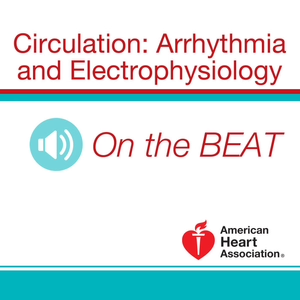
Circulation: Arrhythmia and Electrophysiology November 2019 Issue
Dr Paul Wang: Welcome to the monthly podcast, On the Beat, for Circulation: Arrhythmia and Electrophysiology. I'm Dr Paul Wang, editor in chief, with some of the key highlights from this month's issue.
In our first paper, Leroy Joseph and associates examined whether an increase in dietary saturated fat could lead to abnormalities of calcium homeostasis and heart rhythm, by an NADPH oxidase 2, NOX2-dependent mechanism.
In mice on high fat diets, they found that saturated fat activates NOX, whereas polyunsaturated fat does not. The high saturated fat diet increased repolarization heterogeneity in ventricular tachycardia, VT inducibility in perfused hearts. Pharmacologic inhibition or genetic deletion of NOX2 prevented arrhythmogenic abnormalities in vivo during high saturated fat diet and resulted in less inducible VT. On the other hand, high saturated fat diet activates calcium calmodulin dependent protein kinase in the heart, which contributes to abnormal calcium handling, promoting arrhythmia. This work suggests that a molecular mechanism links cardiac metabolism to arrhythmia and it suggest that NOX2 inhibitors could be a novel therapy for heart rhythm abnormalities caused by cardiac lipid overload.
In our next paper, Misha Regouski and associates examined whether the relationship between endurance exercise and atrial fibrillation, or AF, is dependent on atrial myopathy. They examined six cardiac specific TGFβ1 transgenic and six wild type goats. Pacemakers were implanted in all animals for continuous arrhythmia monitoring and AF inducibility. AF inducibility was evaluated using five separate ten second bursts of atrial pacing. At baseline sustained AF greater than 30 seconds was induced with 10 seconds of atrial pacing in 4 out of 6 transgenic goats, compared to zero out of six wild type controls, P less than 0.05. No spontaneous AF was observed at baseline, three months of progressive endurance exercise up to 90 minutes at 4.5 miles per hour was performed. The authors observed that between two to three months of exercise, three out of six transgenic animals developed self-terminating spontaneous atrial fibrillation compared to zero out of six wild type animals, (P less than 0.05). There was an increase in AF inducibility in both transgenic and wild type animals during the first two months of exercise with partial normalization at three months.
These changes in AF susceptibility were associated with a decrease in circulating micro RNA 21 and micro RNA 29 during the first two months of exercise, with partial normalization three months in both transgenic and wild type animals. The authors concluded that endurance exercise appears to increase inducible AF secondary to altered expression of key profibrotic biomarkers that is independent of the presence of an atrial myopathy.
In our next paper, Seokhun Yang and associates examined whether there is an association between lifetime exposure to endogenous sex hormone, and incident atrial fibrillation, or AF, in subsequent ischemic stroke. They studied nearly five million natural postmenopausal women aged 40 years or greater without prior history of AF and with breast cancer. The primary end point was incident AF and the secondary end point was subsequent ischemic stroke once AF is developed. During the mean follow up of 6.3 years, shorter total reproductive years (<30 years) was associated with 7% increased risk of AF after adjusting for confounding variables. Adjusted hazard ratio, 1.07. Risk of AF declined progressively with every five-year increment in total reproductive years. P for trend less than 0.001. However, the prolonged, two years or greater use of hormone replacement therapy after menopause was paradoxically associated with a 3% increase in AF risk. (Adjusted ratio 1.03).
For the secondary endpoint analysis, the risk of ischemic stroke after AF development significantly decreased with each five-year increment in total reproductive years with less than 30 years as a reference. (Adjusted hazard ratio 0.93, for 30 to 34 years 0.84, for 35 to 39 years is 0.88, for 40 years or greater. P for trend less than 0.001) the authors concluded that women with natural menopause shortened lifetime exposure to endogenous sex hormone, that is, shorter total reproductive years, was significantly associated with a higher risk of AF and subsequent ischemic stroke. In contrast, prolonged exogenous hormone replacement therapy increased the risk of incident AF.
In our next paper, Stephan Hohmann and associates examine the accuracy of electrocardiographic imaging, ECGi, in a closed chest porcine model. A total of 109 endocardial and nine epicardial locations were paced in nine pigs. ECGi predicted the correct chamber of origin in 85% of atrial and 92% of ventricular sites. Lateral locations were predicted in the correct chamber more often than septal location. (97% versus 79% P=0.01) Absolute distances in space bet...
Next Episode
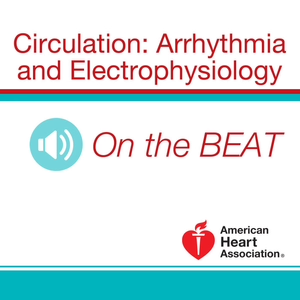
Circulation: Arrhythmia and Electrophysiology January 2020 Issue
Paul J. Wang: Welcome to the monthly podcast On the Beat, for Circulation: Arrhythmia and Electrophysiology. I'm Dr Paul Wang, editor in chief with some of the key highlights from this month's issue.
In our first paper in the real time mapping of AF drivers RADAR study, Subbarao Choudry and associates examined in a single arm first in human investigator-initiated FDA IDE study, a novel system for real time, high resolution identification of atrial fibrillation, AF drivers, in persistent or long-standing persistent AF. They enrolled 64 subjects at four centers, 73% male age, 64.7 years, BMI 31.7. LA size 54. Longstanding AF, 83% longstanding persistent, 17%. prior AF ablation, 41%. After 12.6 months of follow-up, 68% remained AF free off all antiarrhythmics. 74% remained AF free and 66% remained AF, AT and A-flutter free on or off antiarrhythmic drugs. AF terminated with atrial fibrillation ablation in 35 patients, 55% overall. And in 23 out of 38, 61% of de novo ablation patients. For patients with AF termination during atrial ablation, 82% remained AF free and 74% AF, AT or A-flutter free during follow-up on or off antiarrhythmic drugs. Patients undergoing first time AFib ablation had higher rates of freedom from AF than the redo group.
In our next paper, David Briceño and associates examined 19 consecutive patients presenting with left bundle branch block ventricular tachycardia in the setting of arrhythmogenic right ventricular cardiomyopathy, ARVC, with procedures separated by at least nine months and a mean of 50 months. The authors found there was no significant progression of voltage bipolar 38 centimeters squared versus 53 centimeters squared, p=0.09 or unipolar 116 centimeters squared versus 159 centimeters squared, p=0.36 for the entire group. There was a significant increase in right ventricular RV volumes, percentage increase 28%. 206 milliliters versus 263 milliliters, P less than 0.001 for the entire study population. Larger scars at baseline but not changes over time were associated with a significant increase in RV volume, p=0.006 for bipolar and p=0.03 for unipolar.
Most patients with progressive RV dilatation, 57%, had moderate in two patients or severe in six patients, tricuspid regurgitation recorded either at initial or repeat ablation procedure. The authors found that in patients with ARVC presenting with recurrent ventricular tachycardia, more than 10% increase in right ventricular endocardial surface area of bipolar voltages consistent with scar is uncommon during intermediate follow-up. Most recurrent ventricular tachycardias are localized to regions of prior defined scar.
In our next paper, Susan Heckbert and associates examined detection of atrial fibrillation in 1,556 individuals participating in an ancillary study involving ambulatory ECG monitoring part of the cross-sectional analysis in the multiethnic study of atherosclerosis, MESA, a community based cohort study that enrolled 6,814 Americans free of clinically recognized cardiovascular disease in 2000 to 2002. Among 1,556 participants, 41% were white, 25% African American, 21% Hispanic, 14% Chinese, 51% were women mean age 74 years. The prevalence of clinically detected atrial fibrillation after 14.4 years follow-up was 11.3% in whites, 6.6% in African Americans, 7.8% in Hispanics and 9.9% in Chinese and was significantly lower in African Americans than in whites in both unadjusted and risk factor adjusted analyses, p less than 0.001. By contrast, in the same individuals, the proportion of monitor detected atrial fibrillation using a 14-day ambulatory ECG monitor was similar in the four race or ethnic groups. 7.1%, 6.4%, 6.9% and 5.2% compared with white, all p greater than 0.5.
The authors concluded that the prevalence of clinically detected atrial fibrillation was substantially lower in African Americans than white participants with or without adjustments for atrial fibrillation risk factors. However, unbiased atrial fibrillation detection by ambulatory monitoring the same individuals reveal little difference in the proportion with atrial fibrillation by race, ethnicity, supporting the hypothesis of differential detection by race, ethnicity in the clinical recognition of atrial fibrillation.
In our next paper, Maria Teresa Barrio-Lopez and associates examined the presence of epicardial connections between pulmonary veins and other anatomical structures. The authors considered an epicardial connection was present if one, the first pass around the pulmonary vein antrum did not produce pulmonary vein isolation. And two, subsequent atrial activation during pulmonary vein pacing showed that the earliest site was located away from the ablation line and later activation sites were obscured near the ablation line.
Out of the 534 patients included, 72 or 13.5%, were found to have 81 epicardial connections. There was a significant association between the presence of epicardial...
If you like this episode you’ll love
Episode Comments
Generate a badge
Get a badge for your website that links back to this episode
<a href="https://goodpods.com/podcasts/circulation-arrhythmia-and-electrophysiology-on-the-beat-94401/circulation-arrhythmia-and-electrophysiology-december-2019-issue-5066044"> <img src="https://storage.googleapis.com/goodpods-images-bucket/badges/generic-badge-1.svg" alt="listen to circulation: arrhythmia and electrophysiology december 2019 issue on goodpods" style="width: 225px" /> </a>
Copy
